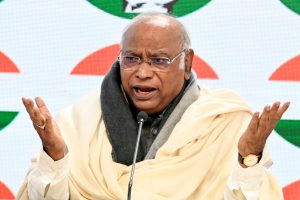Delhi is the churning point of many events, religious, social, cultural and political. In the early 1960s a research scholar from England, T C Martin, came to cover Vinoba Bhave’s mission to bring back the outlaws of the Chambal region to the social fold from which they had rebelled.
Martin camped in Delhi and then came to Agra. This article was co-authored by this scribe for The Statesman with father, whom Martin had approached for help, and is worth reproducing for the benefit of the new generation, though both its motivators are long dead:
“About forty-six miles from Agra, off the Agra-Bah Road, in the notorious country of ravines, thugs and dacoits, is Bateshwar (birth place of Atal Bihari Vajpayee), the ancient and legendary city. The Puranas of the Hindu mythology connect it with the heroes of the Ramayana and the Mahabharta.
Bateshwar is believed to have been the Capital of the kingdom of Vasudeo, Krishna’s father, and it is said that his marriage procession proceeded from here to Mathura.
Magasthenes, the Greek Ambassador to the court of Chandra Gupta Maurya in 4th century BC, visited the city during his travels and wrote of it as Kelisowara “a prosperous, wealthy and beautiful trading centre”. The Jains believe that Neminath was born here.
It was also known as Suryapur. Situated as it is in the ravines, it has had a long history of crime. It was in and about Bateshwar that the thugs of old flourished, as did the Chambal valley dacoit gangs in more recents times.
Sikandar Lodi and Sher Shah Suri maintained military outposts to keep in check the outlaws and Sher Shah erected the fort of Hathkant.
During Akbar’s reign, “Adham Khan was sent to Hatkant to keep the Bhadurias in check in 1559 and he succeeded in this task. It is stated that the next Raja (of the Bhaduria clan of Rajputs) was killed under the feet of an elephant by Akbar’s orders, but that his successor, Mukatman, entered the imperial service and rose to be a mansabdar of 1000.”
Apart from its being a trading centre, Bateshwar appears to have been a centre of political intrigue and a site sacred to the Hindus and the Jains. Several places in Agra District are traditionally connected with the Pandavas and Pinhat (in the region of Bah) is said to derive its name from them.
The Utangan river (on the road to Bateshwar, now spanned by a bridge) is believed to have sprung from the fountain, which spurted from a hole made in the ground by Arjuna’s arrow. Cunningham, who explored the area in 1871, discovered some Buddhist relics, a coin of Apollodotus and some Parthian money in the vicinity of Bateshwar.
In the 16th and 17th centuries Bateshwar was the centre of the Maratha campaigns. Raja Badan Singh of Bhadawar (of the Bhadurias), whose descendant became a member of the Uttar Pradesh State Assembly from that constituency, built in 1646 the Temple of Bateshwar Nath, one of the 101 that today stand in a row along the right bank of the Yamuna.
According to legends, the Maharajas of Bhadawar and the chiefs of Mainpuri were constantly at war. It was, therefore, suggested that the fued be settled by marrying the children of the warring chiefs.
Unfortunately, girls were born to both but Bhadawar announced that a son was born to him and in due course of time, the wedding date was fixed. Bhadawar sent his daughter, dressed as a young man, to wed the daughter of the Mainpuri chief.
The girl was greatly embarrassed and threw herself into the river and lo! Lord Shiva appeared and, lifting up the girl, changed her into a real youth. The Maharaja, out of gratitude, erected the temple and in order to ensure that the river should always flow by its steps, built a two-mile dam to divert its course. This dam and the temple exist to this day.
According to historian Cunningham, there were originally 107 temples, of which six were considered more important, two of them of pure white marble. These were architecturally and sculpturally of a high order. An engraved stone tablet discovered by him described the temples.
It is now held in the museum at Mathura. The main deity, known by various names as Gauri Shanker, Bateshwar Nath, Bihari Raj etc is Shiva. The Maratha Sardar Naro Shanker also built a temple at Bateshwar in memory of the Maratha lives lost at the third battle of Panipat in 1761.
Like Benaras, Bateshwar has been a seat of learning. The chief spoken language of the tract was Sorseni, which has since developed into Brijbhasha. The great poet Goswami Tulsidas, author of the Ramayana, roamed here and did penance.
Bateshwar, the city of such ancient glory, is no longer a populous place but it is held in high esteem and vast multitudes of people visit the sacred temples every year during the Kartika Purnima, among them Chambal Valley dacoits in disguise to offer temple bells.
The number of pilgrims, which was estimated at 100,000 in 1905, was about 10 times more during the last full-moon day (22 November, 1961). People from far and wide flock to the place to make their offerings at the temples and to bathe in the river and, for once, the town is a real bee-hive of activity, with the police busy looking for the outlaws.
As of old, the town revives itself as a great trade centre and a fair is held, where thousands of animals ~ camels, horses, cows and bullocks, mules and donkeys, and goats ~ exchange hands, yielding more than Rs 200,000 annually to the management (Antarim Zila Parishad of Agra). The fair is reckoned as the biggest in northern India, although few elephants are now seen there.
It is difficult to imagine where such vast numbers of animals come from (the camels and bullocks predominate) and how stalls and shops full of stocks of such a variety of goods fill up the 10-mile area of the mela grounds.
These grounds are almost every year submerged by the sacred Yamuna, making of them a veritable lake surrounded by the treacherous ravines, rising and falling to heights and depths of 500 feet or more at places, and making a good hiding spot for dacoits.”
R V Smith










